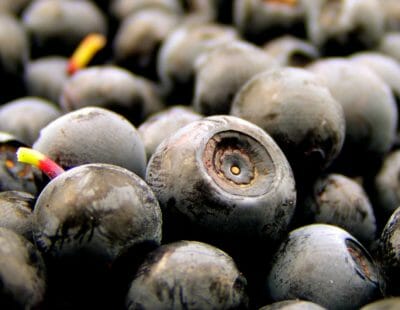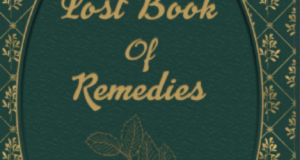It’s related to and often confused for blueberries, and has a time-honored role in both folk and herbal medicine.
It is the bilberry, a delicious blue fruit that can be distinguished from blueberries by looking at the flesh. The flesh of the bilberry is dark and juicy, while the flesh of the blueberry is white or pale green.
The pigment throughout the berry is what makes the medicinal qualities in the bilberry more potent than that of the blueberry. These plants are difficult to cultivate and are most often hunted and wild-harvested in the forests of Europe, northern Asia and North America.
Learn How To Make Powerful Herbal Medicines, Right in Your Kitchen!
Scientifically known as Vaccinium myrtillus, the bilberry is also commonly called a “huckleberry” or a “whortleberry.” Its most popular name, “bilberry,” comes from the Danish word bollebar, which means “dark berry.”[1] The wild plants are so common in Europe that much of the world’s supply is gathered in the mountains from Scandinavia to the Balkans. It is harvested in midsummer and found in woodlands and meadows. The berry is common in European cuisine — made into syrups, jams and desserts.
History of its Use
 Native Americans traditionally ate the fruit of the “big huckleberry,” and used its roots as a treatment for heart ailments and arthritis. In Europe, the bilberry has been used medically for nearly 1,000 years to prevent scurvy due to its high vitamin C content. [2] However, it was German physician H. Bock who first described bilberry’s medical properties, in 1539.[3] The berry continued to gain popularity and by the 17th century a mixture of honey and bilberries, called “rob,” was being prescribed in England to treat diarrhea.
Native Americans traditionally ate the fruit of the “big huckleberry,” and used its roots as a treatment for heart ailments and arthritis. In Europe, the bilberry has been used medically for nearly 1,000 years to prevent scurvy due to its high vitamin C content. [2] However, it was German physician H. Bock who first described bilberry’s medical properties, in 1539.[3] The berry continued to gain popularity and by the 17th century a mixture of honey and bilberries, called “rob,” was being prescribed in England to treat diarrhea.
During World War II, pilots for the British Royal Air Force found — rather accidentally — that eating bilberry jam before a night mission improved their night vision. The practice became standard for both British and American pilots flying at night for the rest of the war.[4] According to Nutritional Herbology, taking bilberry to improve night vision “…is so effective that a single dose is said to improve one’s night vision within hours.”[5]
Medicinal Properties & Uses
Since the night vision claims by the RAF pilots, extensive research in Europe has discovered that the fruit is high in bitter compounds, called flavonoids. These flavonoids or anthocyanosides are contained in the pigment of the bilberry’s skin and flesh and are responsible for the berry’s high antioxidant properties. It’s these flavonoids that are believed to help promote healthy brain and eye function. They also protect against heart disease, free radicals and inflammation.[6] The bitter compounds inhibit collagen destruction and are a standard ingredient in anti-aging remedies.
Beet Powder: The Ancient Secret To Renewed Energy And Stamina
Bilberry is known to affect the structural and circulatory systems.[7] Its tannins and flavonoids are responsible for its anti-inflammatory, antithrombotic and antispasmodic properties. Consuming the berry also helps decrease capillary permeability. This makes the berry a common choice among the sufferers of varicose veins, poor circulation, macular degeneration and glaucoma. It works so well and has so many uses that bilberry is among the most popular non-prescription “drugs” in Europe.
The berry is sweet and tastes similar to a blueberry and is high in zinc, Vitamins C and A, phosphorus, manganese and iron.
The fruit is usually consumed encapsulated or added, as a powder, to smoothies. The dried berries can be made into a tea and administered as a treatment for diarrhea.
Have you ever eaten bilberry? Share your thoughts in the section below:
[1] Herbal Medicine: Expanded Commission E Monographs (pg. 16)
[2] 21st Century Herbal by Michael J. Balick (pg. 296)
[3] Guide to Medicinal herbs by Johnson, Foster, Low Dog & Kiefer (pg. 103)
[4] https://www.encyclopedia.com/sports-and-everyday-life/food-and-drink/food-and-cooking/bilberry
[5] Nutritional Herbology by Mark Pedersen (pg. 46)
[6] Guide to Medicinal herbs by Johnson, Foster, Low Dog & Kiefer (pg. 105)
[7] Nutritional Herbology by Mark Pedersen (pg. 46)
 Off The Grid News Better Ideas For Off The Grid Living
Off The Grid News Better Ideas For Off The Grid Living




